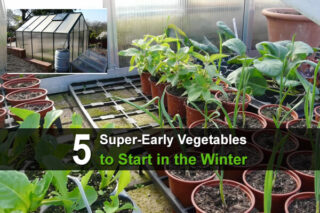Estimated reading time: 5 minutes
Rabbits are quickly becoming one of the most popular animals to raise on the homestead. They are low maintenance, provide a healthy source of meat, can thrive on a small amount of space, have a short turnaround time from birth to butcher, and are very feed-efficient.
Not to mention, they’re just fun to have around! Although it may be hard to fathom using something as cuddly as a rabbit for meat, it’s hard to deny they are a great animal to raise on any homestead.
1. Free Fertilizer
Rabbits are an abundant source of fertilizer for your garden. On average, one rabbit can produce up to 500 pellets of waste per day! These pellets are packed with nitrogen, phosphorous and potassium, and are a great addition to the garden. Rabbit manure won’t burn your plants like poultry manure will, which means you can apply it directly to the garden without composting it first.
On our farm, we raise our rabbits in cages with wire bottoms. During the spring and fall, we place these cages directly on our garden space and move them along every day. When it comes time to plant the garden, all we have to do is till under the rabbit manure and our soil amendments have been done for us!
2. Feed Efficiency
Rabbits are more efficient at converting pounds of feed to pounds of meat than many larger animals. On average, rabbits will produce one pound of meat for every four pounds of feed consumed. Compare this to cows, which need seven pounds of feed to produce one pound of meat.
The feed efficiency of rabbits means you will get the most bang for your buck when it comes to turning purchased feed into meat. These numbers are based on a pellet-based diet, of course, and the amount of feed needed to produce one pound of meat will be higher if you raise your rabbits on a pasture-only diet. Here is more information on what to feed rabbits.
3. Short Turn Around
From birth to butcher, rabbits fed on a diet of pasture and pellets can be ready to eat in between eight and eleven weeks. That’s about the same amount of time as your commercial broiler chicken breeds. And, because the gestation period for rabbits is only thirty days, you can have a steady stream of rabbits available just by staggering your breeding dates by one month.
Using an average litter size of six, a single breeding pair of rabbits (doe and buck) can produce up to 72 baby rabbits (kits) a year. That’s over 200 lbs of meat a year!
4. Healthy Source of Protein
Rabbit meat is quite possibly one of the healthiest meats around. It is extremely low in cholesterol and saturated fat, and it boasts one of the highest protein contents per ounce of meat.
A three-ounce serving of rabbit meat has about 28 grams of protein, much higher than chicken or beef. Rabbit meat is also a good source of iron and a wide range of other minerals including phosphorous and potassium.
5. Cost Efficiency
If one of your criteria for raising livestock on your homestead is to cut costs, rabbits can be a great option. If you choose to raise your rabbits completely on pasture, their feed is free during the summer! They do very well eating nothing but grass and vegetable scraps.
Raising them this way will result in a slower growth time, however. Up to 23 weeks in some cases. But, when you weigh the extra time against the cost savings of not having to buy pellets during the summer, rabbits can be very appealing to the cost-conscious homesteader.
6. Ideal for a Small Space
If your homestead is limited to an urban backyard or even an apartment rooftop, rabbits can be a great livestock option. The infrastructure needed to raise rabbits is fairly minimal and, with the right planning, can be done in a fairly small space.
Each breeding rabbit needs its own hutch, but there are lots of plans available that show how you can stack hutches for maximum space efficiency. You can even hang your rabbit cages to make working with them easier and protect them from any ground predators that may lurk about.
Rabbits that you’ll be using for meat production (typically called “fryers”) can be kept in a larger hutch together, colony style, as long as they are butchered before they reach sexual maturity.
If you will be raising your fryer rabbits together in one rabbit hutch, it is usually better if they are all from the same litter. This ensures that there won’t be any dominance issues when mixing two different litters and will make knowing your butchering date easier.
7. Quiet & Easy to Handle
Many people love waking up to the rooster’s crow at dawn, or walking outside to a goose’s loud greeting. But many people don’t. And, for those people, rabbits are a wonderful option! They are very quiet, won’t bother the neighbors and, when socialized well, are very easy to handle and move around as necessary.
Because they are so easily handled, rabbits can also be a wonderful animal for teaching young children the responsibility of caring for livestock.












The low fat content of rabbits makes them somewhat problematic. don’t forget other sources…fish is a good protein source that has some other good attributes as well.
Good point! If you’re going to truly be self-sufficient, you’ll need a wide variety of food in order to get all your macronutrients.